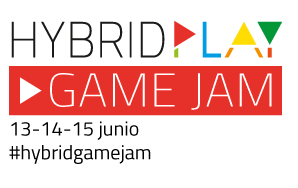It’s been some days since we came back to Spain from Athens, where we were invited by the Department of Communication and Media Studies of the National and Kapodestrian University of Athens. It was a brief but intense stay, that we utterly enjoyed thanks to the companionship and experience of our hosts, professor Dimitris Charitos and researchers Daphne Dragona and Iouliani Theona. Professor Charitos organizes the Hybrid City international conference, devoted to the analysis of the processes and transformations of contemporary cities, related to social ad technological development. It was for us a great opportunity to show them the most recent progresses of the Hybrid Play project, and gathering feedback from them. And Greek kids’ feedback as well. Even though the language seemed to be a troubled in the beginning, as soon as we started drawing any obstacle disappeared. How it is said “swing” in Greek? ¿and “slide”? Let’s better make a drawing! We learned new words, but playing is a universal language; we got to understand each other by simply playing. We talked about video games and also outdoor play, and we discovered something that we have found in many other places: children form Athens love video games, they have some game console at home and they also play with their parents’ smartphones. But if you ask them to go to the park and play with their friends… they accept without hesitation.
For two days we took part in a Hybrid Play workshop with seven kids aged five to eight years old, and their parents or companions. We started with a video game design session, in which they defined the themes that they wanted to play in the park, the structure of the games and the graphics. We’re always shocked by their capacity to generate new ideas, and in few minutes we had many proposals: a game about a diver looking for pearls, a car that has to avoid obstacles on the road… simple ideas that they had themselves, therefore being appealing for them. Finally we decided to produce three minigames, and they all together started to work in the graphics. The designs they drew in paper were digitized with a scanner and then, using Gamesonomy, the kids crated the games and were able to try them in the computer. Although we’ve been working side by side with Gamesonomy’s developers for quite some time, that was the very first time that the kids made their games with the system completely implemented, and the process as a whole was good. Despite not having much time, the ideas to produce were simple and the resultant minigames showed up functional and playable. And above all, the children had designed and made every game themselves!
The day after that we went to the park in the National Garden, and we opted to do what we like the most: to play out! We tried the new games, and also Pac-Man and Puzzle City. The Hybrid Play sensor worked like a charm in every element of the park, and the straightforward games that we made the day before turned into challenges: swinging right and left to dive, use the slide in order to catch the screws falling down from the sky…








